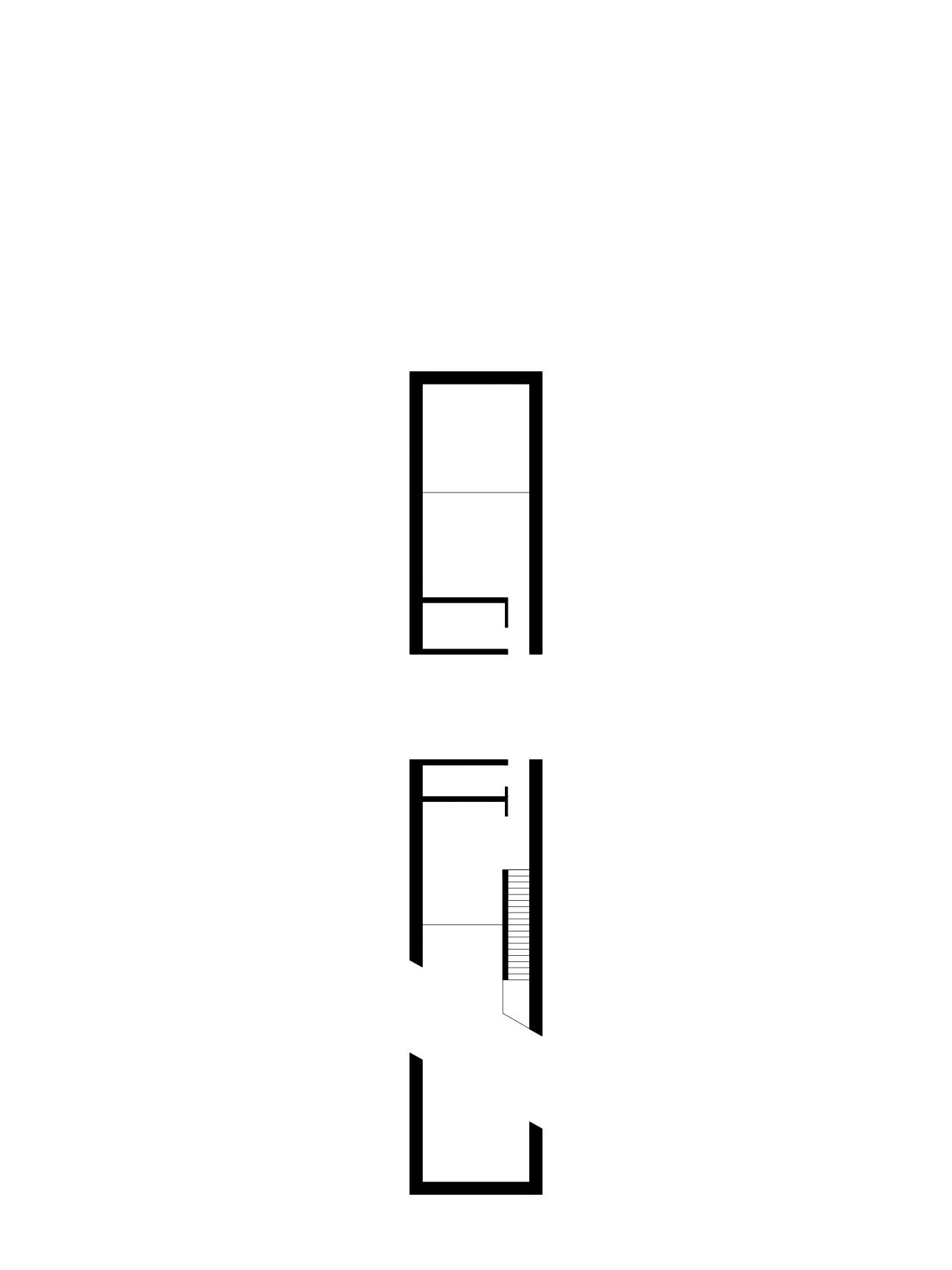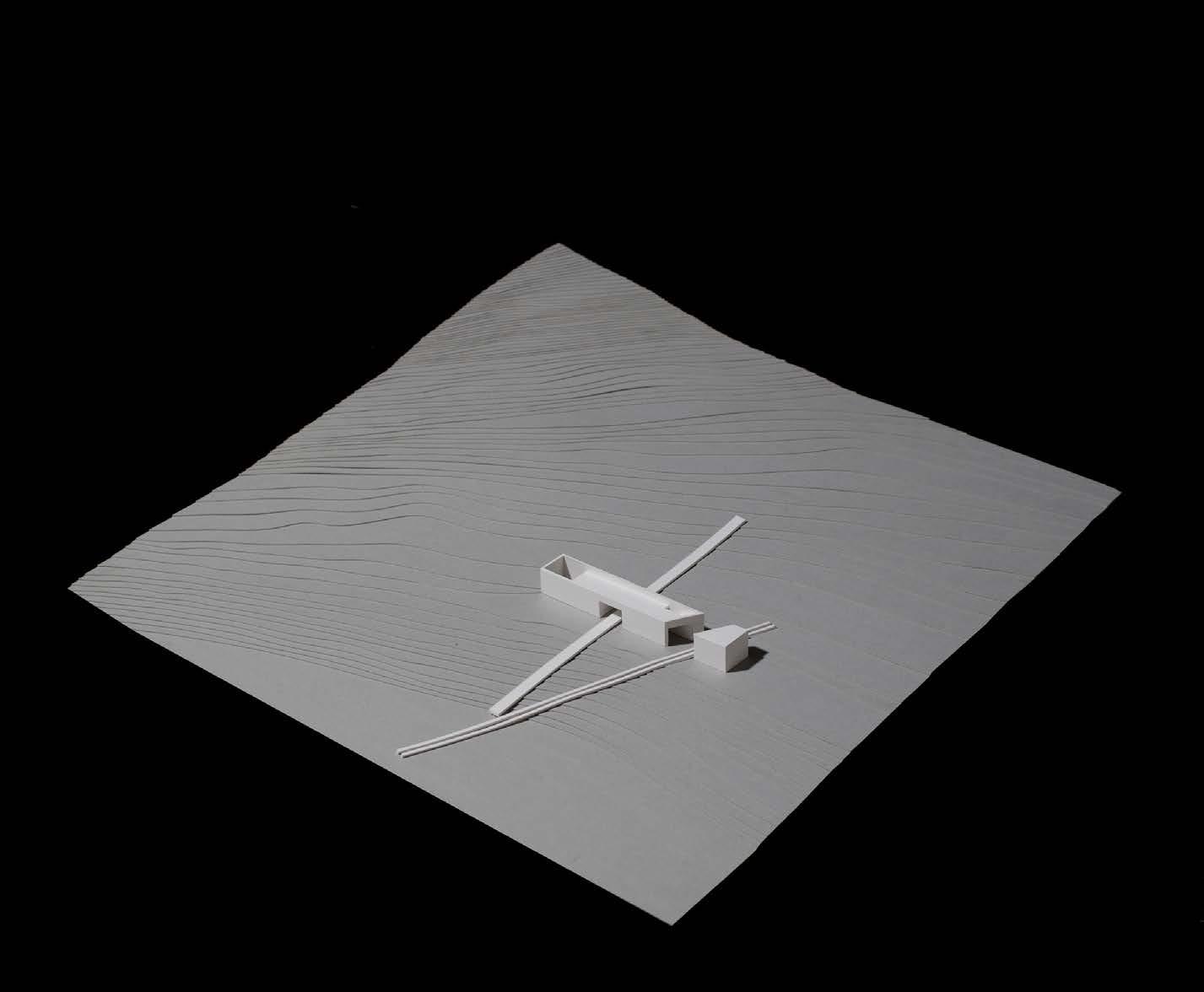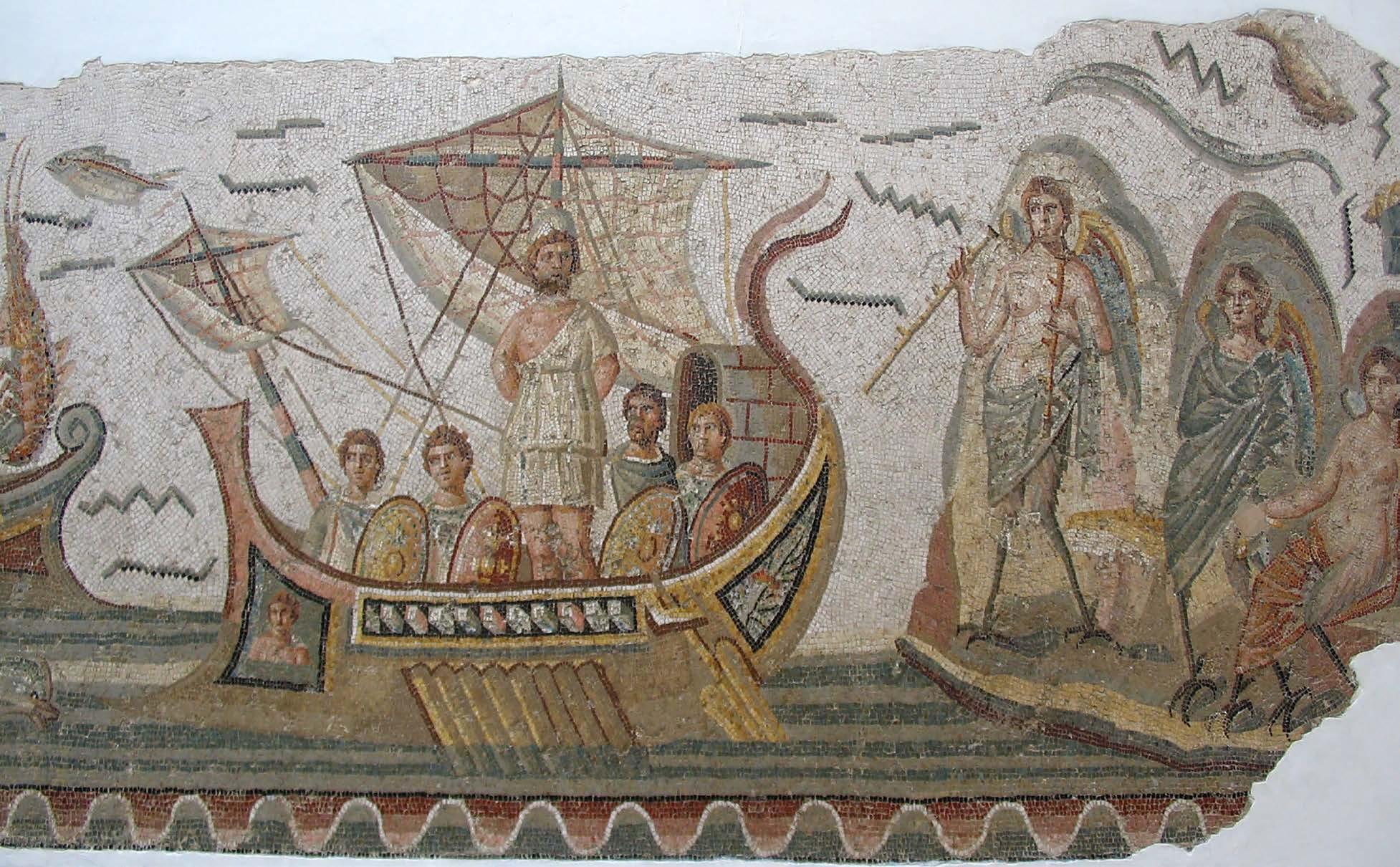
13 minute read
Ritorno a Itaca | Return to Ithaca
“ΕΥXHΝ OIΚΟΥΣΙ ΝHΡΙΤΟΝ” . Itaca.
Michelangelo Pivetta
DIDA | Università degli Studi di Firenze
Odisseo guida i Cefalleni superbi, che vengono da Itaca, dal selvoso Nerito, da Crocilea e dall’aspra Egilipe, da Zacinto e da Samo, ma anche dal continente, delle terre poste di fronte alle isole; di essi è il capo Odisseo, saggio al pari di Zeus; guida dodici navi dalle prore tinte di rosso. (Iliade, II, 631-637)
Se il viaggio è oggetto fenomenico della tradizione culturale occidentale, il ritorno ne è parte integrante. Il ritorno rende compiuta qualsiasi migrazione ed esplorazione, fino a diventarne non il semplice corredo conclusivo ma, in definitiva, l’unico vero scopo. La sceneggiatura del ritorno non è propria solo della tradizione pagana dell’antichità greco-romana ma anche di quella successiva, e in qualche modo contemporanea, di matrice giudaico-cristiana. Già nella Genesi biblica sono rintracciabili le archetipiche tracce che individuano nell’allontanamento dall’Eden l’inizio del lungo viaggio umano, destinato, comunque vada, al ritorno in quei luoghi a Giudizio avvenuto. Nell’Esodo il ritorno alla Terra Promessa è ciò che guida il popolo d’Israele nei quarant’anni di prove e peregrinazioni dopo la fuga dall’Egitto, para-
And Odysseus led the great-souled Cephallenians that held Ithaca and Neritum, covered with waving forests, and that dwelt in Crocyleia and rugged Aegilips; and them that held Zacynthus, and that dwelt about Samos, and held the mainland and dwelt on the shores over against the isles. Of these was Odysseus captain, the peer of Zeus in counsel. And with him there followed twelve ships with vermilion prows. (Iliad, II, 631-637)
The journey is a phenomenal object in the Western cultural tradition, and the return is an essential part of it. The return completes any migration and exploration, becoming not only a simple concluding element but, ultimately, it’s only true purpose. The scenario of the return does not belong exclusively to the ancient Greek and Roman pagan traditions, but also to the subsequent and in some ways contemporary Judeo-Christian tradition. Already in the Genesis is it possible to detect the archetypal traces that identify in the expulsion from Paradise the starting point for the long journey of mankind, which is destined, one way or another, to the return to that Garden after the Last Judgment. In Exodus, the return to the Promised Land is what
digma rinnovato in epoca più recente con la Diaspora e con l’Aliyah. Altrettanto è un viaggio quello di Cristo nella sua drammatica dimensione umana in cui l’epilogo della resurrezione, parte sostanziale del Credo cristiano, è il necessario ritorno alla propria trascendenza divina, trasfigurato in promessa di salvezza per tutti i credenti. Il nostos è quindi quel luogo sacro del più vasto monumento della costruzione teoretica del viaggio, tale da dare forma e sostanza alla conoscenza come struttura stessa dell’esistenza umana. Ulisse, l’eroe non-divino forse più simile a tutti noi, l’uomo dalla mente dai mille colori, ritorna a Itaca in forma diversa. Egli porta con sé la saggezza dell’anzianità prima che essa diventi vecchiaia, ma soprattutto la superiore sapienza di chi ha conosciuto e visto, lungo il proprio peregrinare, il diverso superandone le prove rappresentate nel testo omerico come forme di metafora a definire i tratti di un processo umano utile fino al divenire necessario per lo svolgersi dell’atto finale. L’invenzione, la capacità di concepire e raccontare storie sono i tratti salienti della figura umana di Odisseo e, come per il Leopold Bloom di Joyce, ne determinano azioni e relativi drammi. In essi si nasconde quella profonda matrice critica e razionale propria dell’uomo già moderno che pur proprietario cosciente della propria memoria, si allontana tanto dalle difguides the people of Israel throughout their forty years of trials and tribulations after the flight from Egypt, a paradigm which was renewed subsequently through the Diaspora and the Aliyah. Also Christ’s dramatic embodiment of the human dimension is a journey, in which the epilogue of the resurrection, as essential element of the Christian creed, is the necessary return to his own divine transcendence, transfigured into a promise of salvation for all believers. Nostos, therefore, is the sacred place in the wider monument of the theoretical construction of the journey, which provides form and substance to knowledge as the structure of human existence itself. When Ulysses, the non-divine hero who is perhaps the closest to us, the man with the thousand-coloured mind, returns to Ithaca, he is a different man. He carries with him the wisdom of old-age before it turns into senility, but especially the superior knowledge of he who as known and seen, throughout his pilgrimage, the diverse, who has overcome the trials, represented as metaphors in Homer’s text, so as to determine the traits of a human process of becoming that is necessary for the unfolding of the final act. Invention, as well as the capacity to conceive and narrate stories, are the salient traits of the human figure of Odysseus and, as for Joyce’s Leopold Bloom, they determine both actions and their related dramas. They conceal that deep critical and ration-
fuse credenze quanto dai comuni e sterili rituali umani. Questi tratti dell’eroe, colui che custodisce e protegge1, traslati nel piano dell’architettura sono distinguibili per alcune note in cui si dipanano i caratteri dell’abitare mediterraneo e dove la condizione di emergenza, sia essa civile, militare, religiosa, raggiunge molteplici ma omogenei quadri di sintesi, tali per cui lo strumento tecnico dell’edificare diviene forma architettonica, arte. L’immaginario della solitudine umana, il frangente del ritorno epico dal lungo viaggio, nello spazio temporale di quella seconda o terza età prossima al fine vita, è per i progetti dedicati ad Itaca, sul litorale di Pólis vicino alle antiche cave di Louizu2, il territorio di confronto compositivo e di applicazione di una storia nel suo divenire disegno e progetto. Lungo questa spiaggia e ai piedi di quel monte sacro, dove l’epopea dell’eroe Ulisse ebbe inizio e fine, per il suo omologo contemporaneo l’apparato strumentale della contemporaneità si conforma alla natura o, meglio, a quella sua versione piegata nei millenni dall’uomo e che definiamo paesaggio e sulle rare ma chiarissime geometrie di un’archi-
1 Il termine greco éros e poi latino heros assume nel tempo il significato più complesso di quello di “uomo forte” o di discendente da una divinità. Ad esso la collettività attribuisce l’onere di protezione e salvaguardia, non solo fisica ma soprattutto culturale della civiltà. Ulisse ad esempio al suo ritorno si assumerà l’onere di riportare la propria terra all’ordine dalla barbara condizione instaurata in sua assenza. 2 Coordinate geografiche del sito di progetto: 38°26’31.41”N - 20°38’22.19”E. al matrix that is characteristic of the modern man who, although conscious owner of his own memory, distances himself both from widespread beliefs and from common and sterile human rituals. These traits of the hero, he who guards and protects1, translated onto the plane of architecture, are recognisable through some elements which reveal the features of Mediterranean dwelling in which the condition of emergence, be it civil, military, or religious, reaches numerous, yet homogeneous, synthetic frameworks, through which the technical instrument of building becomes architectural form, art. The collective imaginary of human solitude, the epic return from the long journey, in the temporal space of that second or third age that is close to the end of life is, in terms of the projects devoted to Ithaca on the shores of Polis near the ancient caves of Louizu2 , the territory for confronting the composition and application of a story in its process of becoming design and project. Along this shore and at the foot of that sacred mountain, where Ulysses’ epic both began and came to an end, for his contemporary namesake the instrumental appa-
1 The Greek term éros, and the later Latin heros assumes with the passage of time the more complex meaning of “strong man”, or of a man who is the descendant of a divinity. To it, the community ascribes the duty of protecting and safeguarding civilisation, not only materially, but especially culturally. Ulysses, for example, upon his return, will take on the task of bringing back order to his Kingdom, which in his absence had been thrown into lawlessness. 2 Geographical coordinates for the site of the project: 38°26’31.41”N - 20°38’22.19”E.
tettura indigena tale da poter essere definita in ogni suo aspetto senza tempo. Il necessario racconto del viaggio diviene fatto letterario nella lingua dell’architettura al fine di procrastinare il mito. Se il ritorno è forma altrettanto necessaria di nostalgia per una terra lasciata e poi ritrovata diversa, il nuovo insediamento, dedicato all’abitare distante e al riposo dell’eroe, è allo stesso modo nuovo tempio/dimora dove custodire in forma riservata, ma non privata, il sapere, la conoscenza, il trascendentale, tutto ciò che per l’uomo è in fine necessario. ratus of contemporaneity adapts to nature, or better yet, it adapts to the version of nature that has been moulded by mankind throughout the centuries and which we define as landscape, and to the rare yet clear geometries of an indigenous architecture that can be defined, in every aspect, as timeless. The necessary tale of the journey becomes a literary fact in the language of architecture, with the purpose of postponing the myth. If the return is one of the equally necessary forms of nostalgia for a land that was left behind and then found again, yet changed, the new settlement, devoted to a distant dwelling and to the hero’s rest, is both simultaneously a new temple/dwelling where learning and knowledge, the transcendent, and ultimately everything that is necessary to man, can be safeguarded in a reserved, although not private manner.
Uisse e le Sirene, Museo Nazionale del Bardo, Tunisi.
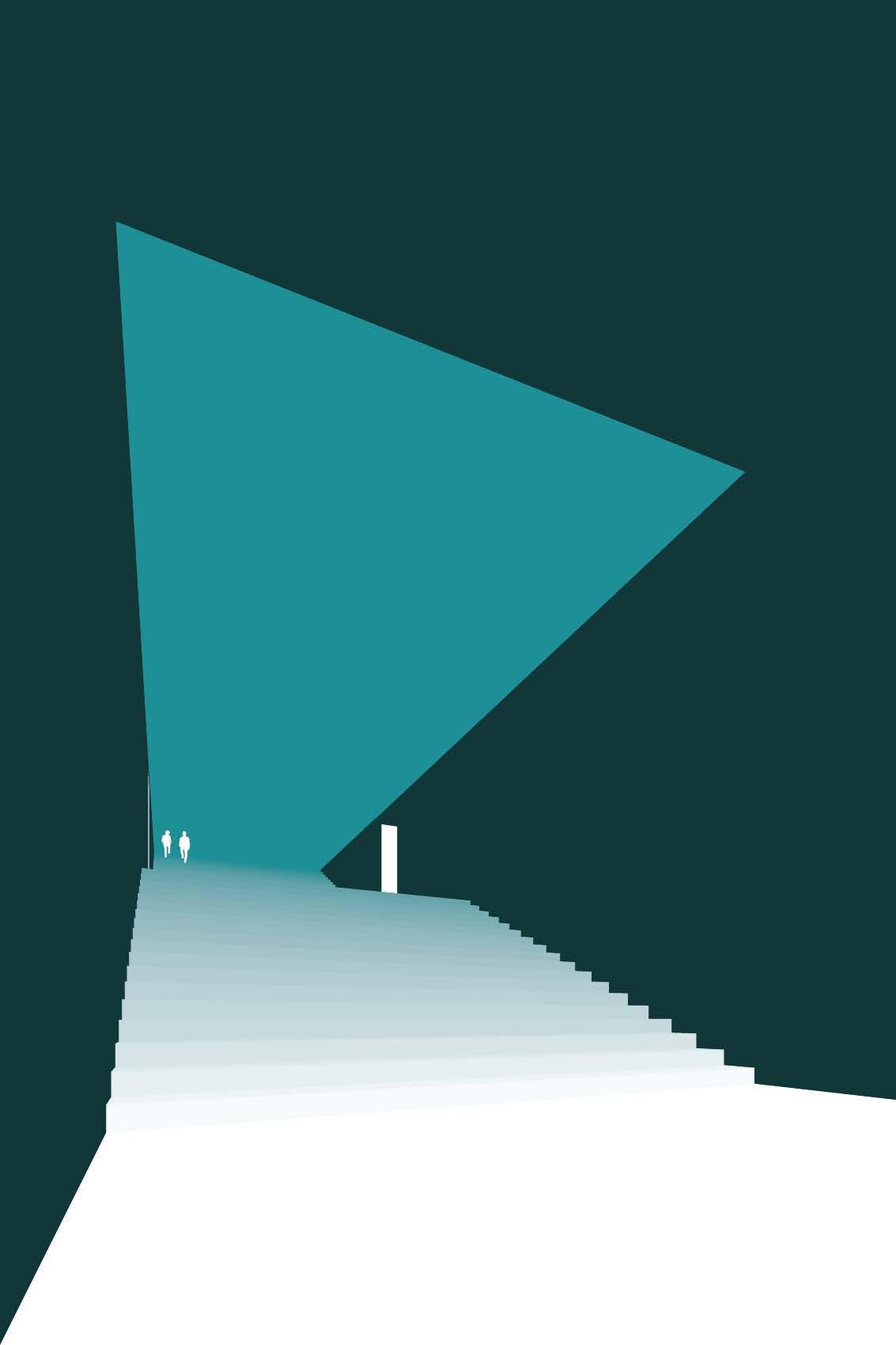
Rituale
La casa si articola sul promontorio lungo la sua massima pendenza. Una scalinata, pensata per scendere, più che per salire, permette di accedere ai luoghi dell'abitare secondo una sorta di pratica rituale. Il progetto propone così un rito di conoscenza progressiva dall'esterno all'interno trovando il proprio luogo mistico nella corte. La composizione si manifesta in maniera modulare sia in pianta che in alzato, dove attraverso delle sottili aperture orizzontali si propongono precise inquadrature del territorio circostante e del mare. L'edificio si associa al paesaggio ampliando relazioni a determinare nuove forme. La massa muraria emersa si confronta con le pareti della vicina e antica cava di pietra apparendo dalla costa come un podio incompleto, dimenticato, emerso dal fianco montuoso come ciò che resta di un antico edificio.
Ritual
The house is situated on the promontory at the point of greater inclination. A flight of steps, devised for descending, rather than for ascending, permits access to the places of dwelling in accordance with a sort of ritual practice. The project proposes in this way a rite of progressive discovery from the exterior toward the interior, and locating its mystical place in the courtyard. The composition is modular both in plan and in elevation, and through the thin horizontal openings proposes precise framed images of the surrounding area and of the sea. The building associates with the landscape by expanding relationships which determine new forms. The walls of the building interact with those of the nearby ancient stone quarry and appears from the coast as an incomplete podium, forgotten, which emerges from the side of the hills like the remains of an ancient building.





Ritorno
La dimensione primigenia dell’architettura risiede nell'uso degli anfratti e delle caverne come spazi lasciati liberi dalla Natura per accogliere l'uomo. Il progetto si propone di recuperare in parte uno di questi spazi ipogei per ritornare alla scoperta della dimensione originaria e quasi sacra dell'abitare per gli uomini degli inizi. La casa occupa in parte un sistema di escavazioni e caverne sul fianco del versante montuoso e ripercorre a ritroso il tempo dell’abitare fino alla sua origine indagando quindi, anche simbolicamente, la possibilità di una sua riedizione contemporanea. Solo un setto, scavato pure esso per semplice necessità, denuncia all'esterno la presenza di un edificio nella sua forma contemporanea. Un solo prospetto, una quinta quindi, svela dal mare l'avverarsi della promessa dell’abitare, un indizio, o forse solo un miraggio.
Return
The primeval dimension of the architecture lies in the use of the ravines and caves as spaces left free by Nature for accommodating man. The project proposes to partially recover one of these hypogean spaces in order to return to the original and almost sacred discovery of dwelling by early man. The house occupies in part a system of excavations and caves on the side of the hill and traces the time of dwelling back to its origins, thus inquiring, also symbolically, into the possibility of a contemporary reproduction. Only a septum, also excavated as a result of a simple need, reveals from the outside the presence of a building in its contemporary form. A singly facade, a backdrop, reveals from the sea the fulfillment of the promise of dwelling, a clue, or perhaps just a mirage.


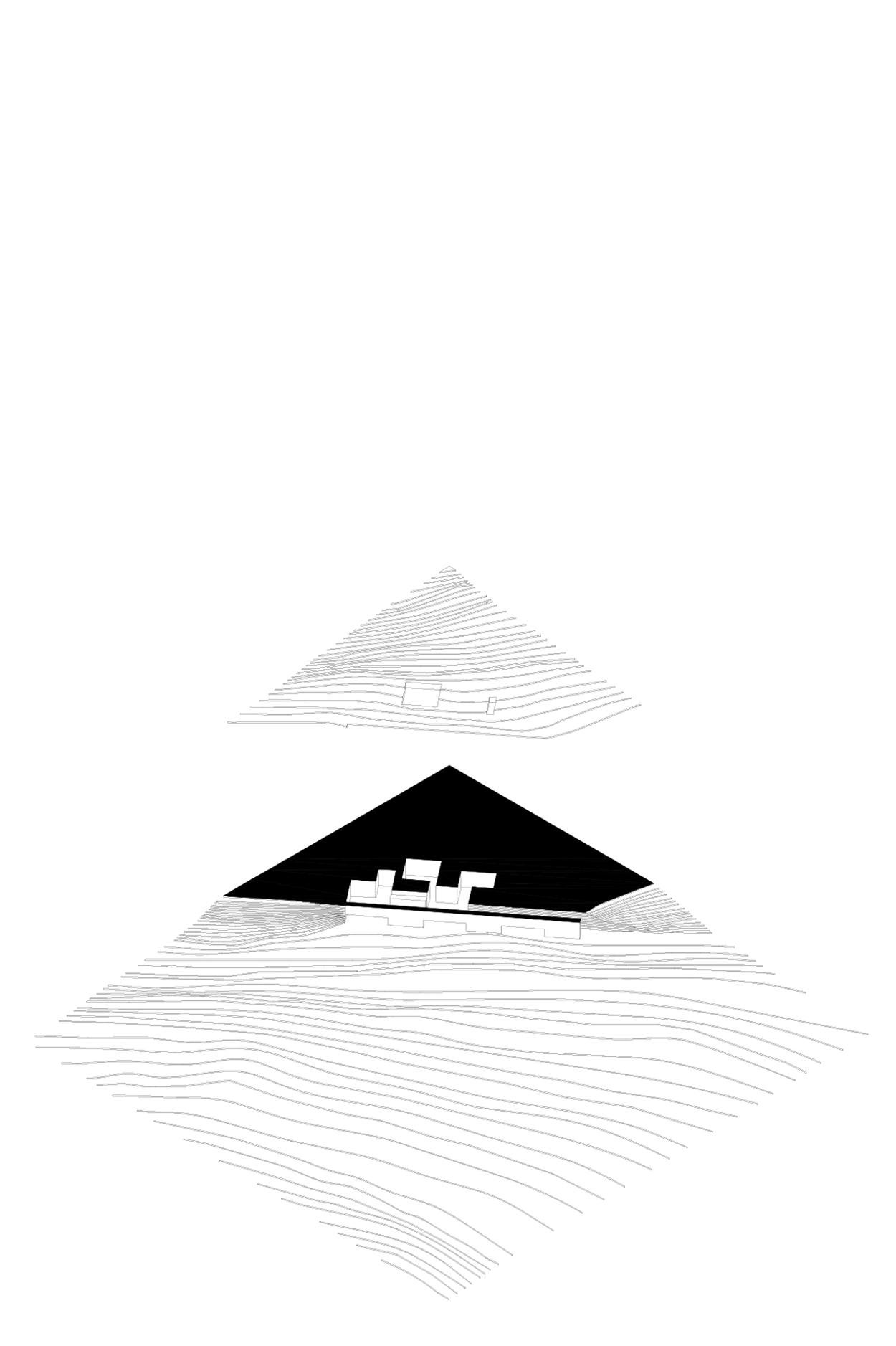

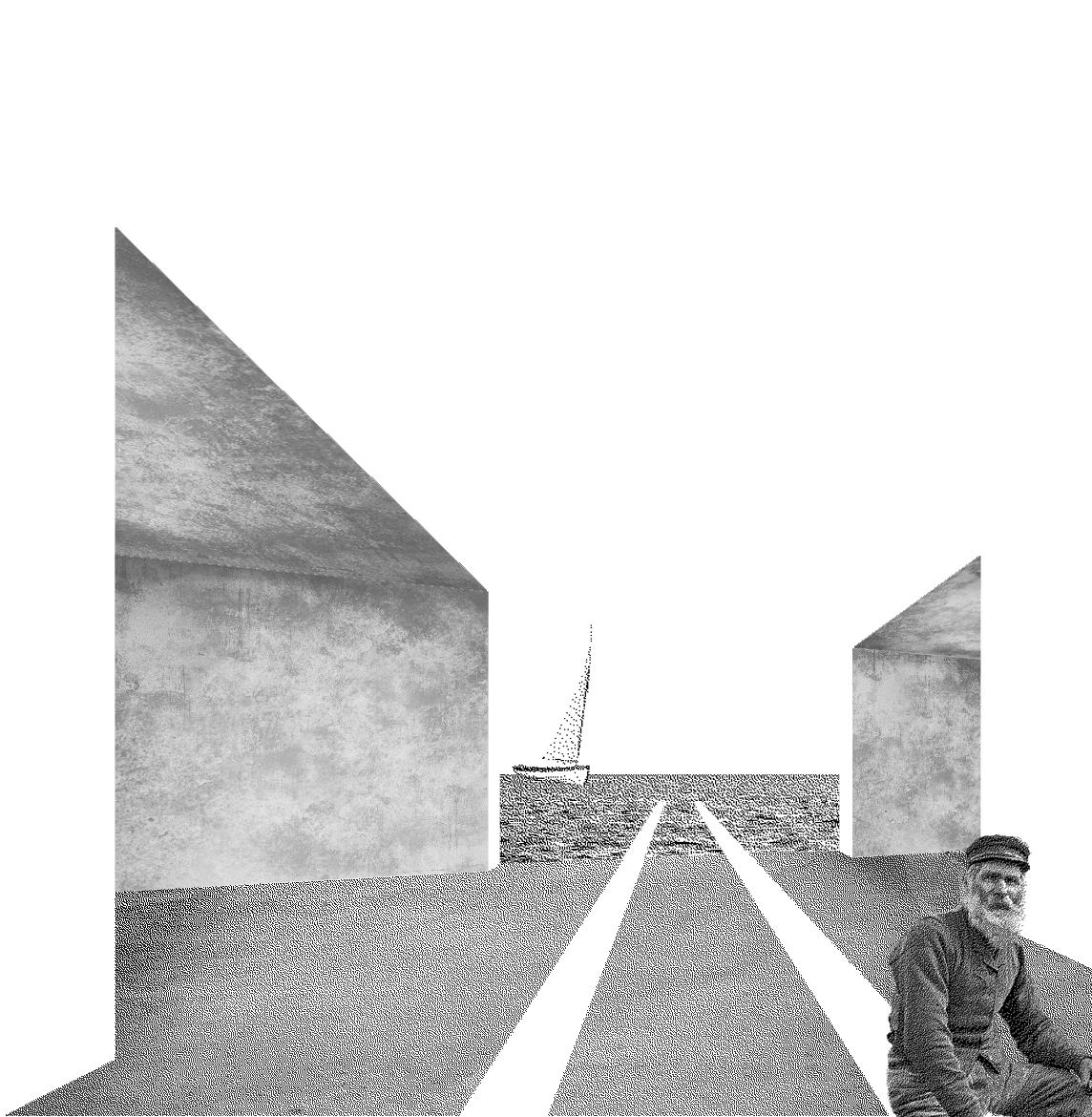
Nessuno
La casa più che luogo di partenza è luogo di ritorno. Qui la composizione si definisce attraverso tre direttrici che interagiscono con il mare e il suo litorale. La casa vuole essere molo, porto, prima terra sfiorata da quegli uomini che ritornano. Luogo dell'attesa per chi è rimasto e di arrivo per chi è partito. Un camminamento scandisce la sequenza di semplici volumi e delle altrettanto misurate assenze governate da una apparente casualità e in cui ogni ambiente può essere adeguato a qualsiasi funzione. Lo sviluppo planimetrico e le sue misure sono determinati dall'adozione del modulo teorico di antiche navi e da quelle misure destinate al mare, come per le imbarcazioni omeriche dando sostanza alle misure dell'architettura. L'abitare si svolge secondo l'informalità dello spazio costruito, i volumi sono ricoveri, gli spazi dei ripari per chi naviga, per chi pesca e per chi attende. I moli, tracce metaforiche del tutto, sono luoghi della solitudine, della promessa e dell'abbraccio eterno con il mare.
Nobody
The house is more the place of return than of departure. The composition is determined through three directrices which interact with the sea and the coast. The house wishes to be a pier, a port, the first land touched by those returning men. The place for waiting for those who stayed back, and of arrival for those who left. A walkway articulates the sequence of simple volumes and of the equally measured absences governed by an apparent randomness, in which every space can be adapted to any function. The planimetric development and its measures are determined by the adoption of the theoretical module of ancient ships and of those measures destined to the sea, as in the case of Homer’s vessels, thus giving substance to the measures of the architecture. Dwelling takes place in accordance with the informal nature of the built space, the volumes are havens, the spaces shelters for those who navigate, for fishermen out at sea, and for those who wait for them. The piers, metaphorical traces of the whole, are places of solitude, of the promise and of the eternal embrace with the sea.
